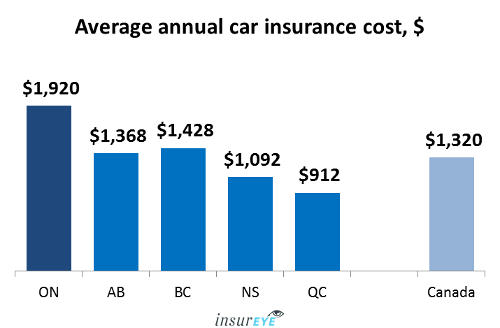A copay is a fixed quantity you spend for a health care service, usually when you receive the service. The amount can vary by the kind of service. How it works: Your plan determines what your copay is for various types of services, and when you have one. You may have a copay before you've finished paying towards your deductible.
Your Blue Cross ID card might list copays for some sees. You can also log in to your account, or register for one, on our site or using the mobile app to see your plan's copays.
No matter which type of medical insurance policy you have, it's important to understand the difference in between a copay and coinsurance. These and other out-of-pocket expenses impact just how much you'll spend for the healthcare you and your family get. A copay is a set rate you pay for prescriptions, doctor check outs, and other types of care.
A deductible is the set amount you pay for medical services and prescriptions prior to your coinsurance how to cancel a timeshare kicks in. Initially, to comprehend the distinction between coinsurance and copays, it helps to know about deductibles. A deductible is a set quantity you pay each year for your healthcare before your strategy starts to share the expenses of covered services.
9 Simple Techniques For What Does No Fault Insurance Mean
If you have any dependents on your policy, you'll have a specific deductible and a different (higher) quantity for the household. Copays (or copayments) are set amounts you pay to your medical supplier when you receive services. Copays usually start at $10 and increase from there, depending on the type of care you receive.
Your copay uses even if you haven't met your deductible yet. For instance, if you have a $50 specialist copay, that's what you'll pay to see a specialistwhether or not you've met your deductible. The majority of strategies cover preventive services at 100%, meaning, you will not owe anything. In general, copays don't count toward your deductible, but they do count toward your optimum out-of-pocket limitation for the year.
Your health insurance coverage strategy pays the rest. For example, if you have an "80/20" strategy, it means your strategy covers 80% and you pay 20% up until you reach your maximum out-of-pocket limitation. Still, coinsurance only uses to covered services. If you have expenditures for services that the plan does not cover, you'll be accountable for the entire bill.


As soon as you reach your out-of-pocket optimum, your medical insurance plan covers 100% of all covered services for the rest of the year. Any cash you invest on deductibles, copays, and coinsurance counts towards your out-of-pocket optimum. However, premiums don't count, and neither does anything you invest in services that your plan does not cover.
Indicators on How Much Does Health Insurance Cost Per Month You Need To Know
Some plans have two sets of deductibles, copays, coinsurance, and out-of-pocket maximums: one for in-network suppliers and one for out-of-network service providers. In-network providers are physicians or medical centers that your plan has actually worked out unique rates with. Out-of-network companies are everything elseand they are generally far more expensive. Keep in mind that in-network does not necessarily suggest close to where you live.
Whenever possible, make certain you're using in-network suppliers for all of your healthcare requires. If you have particular medical professionals and facilities that you 'd like to utilize, make certain they belong to your plan's network. If not, it may make financial sense to switch plans during the next open enrollment period.
State you have a private plan (no dependents) with a $3,000 deductible, $50 specialist copays, 80/20 coinsurance, and an optimum out-of-pocket limitation of $6,000. You go for your annual examination (complimentary, because it's a preventive service) and you discuss that your shoulder has actually been hurting. Your physician sends you to an orthopedic specialist ($ 50 copay) to take a closer look.
The MRI costs $1,500. You pay the whole amount considering that you have not met your deductible yet. As it ends up, you have actually a torn rotator cuff and require surgery to repair it. The surgery costs $7,000. You have actually already paid $1,500 for the MRI, so you need to pay $1,500 of the surgical treatment bills to satisfy your deductible and have the coinsurance begin.
The 15-Second Trick For What Is A Deductible Health Insurance
All in, your torn rotator cuff expenses you $4,100. When you look for a health insurance coverage strategy, the strategy descriptions constantly specify the premiums (the quantity you pay every month to have the strategy), deductibles, copays, coinsurance, and out-of-pocket limitations. In basic, premiums are higher for strategies that use more beneficial cost-sharing benefits.
Nevertheless, if you expect to have significant healthcare expenses, it might be worth it to spend more on premiums every month to have a plan that will cover more of your costs.
Coinsurance is the quantity, typically revealed as a fixed percentage, an insured should pay against a claim after the deductible is satisfied. In health insurance coverage, a coinsurance provision is comparable to a copayment arrangement, except copays require the insured to pay a set dollar amount at the time of the service.
One of the most typical coinsurance breakdowns is the 80/20 split. Under the regards to an 80/20 coinsurance plan, the insured is responsible for 20% of medical expenses, while the insurance company pays the remaining 80%. However, these terms only use after the insured has reached the terms' out-of-pocket deductible quantity.
How Long Can I Stay On My Parents Health Insurance Fundamentals Explained
Copay strategies might make it easier for insurance coverage holders to budget their out-of-pocket costs due to the fact that it is a fixed amount. sell my timeshare with no upfront fees Coinsurance typically splits the costs with the insurance policy holder 80/20 percent. With coinsurance, the insured need to pay the deductible before the business covers its 80% of the expense. Presume you secure a health insurance policy with an 80/20 coinsurance arrangement, a $1,000 out-of-pocket deductible, and a $5,000 out-of-pocket optimum.
Because you have actually not yet satisfied your deductible, you need to pay the first $1,000 of the costs. After satisfying your $1,000 deductible, you are then just responsible for 20% of the staying $4,500, or $900. Your insurance provider will cover 80%, the staying balance. Coinsurance also uses to the level of property insurance coverage that an owner need to buy on a structure for the coverage of claims - which of the following typically have the highest auto insurance premiums?.
Also, given that you have actually already paid an overall of $1,900 out-of-pocket during the policy term, the optimum amount that you will be required to spend for services for the remainder of the year is $3,100. After you reach the $5,000 out-of-pocket optimum, your insurance provider is accountable for paying up to the optimum policy limitation, or the optimum benefit allowable under a given policy.
Nevertheless, both have benefits and downsides for customers. Due to the fact that coinsurance policies need deductibles before the insurance provider bears any expense, insurance policy holders soak up more costs upfront. On the other side, it is likewise most likely that the out-of-pocket maximum will be reached previously in the year, leading to the insurance provider sustaining all costs for the rest of the policy term.
See This Report on What Is Coinsurance In Health Insurance
A copay plan charges the insured a set amount at the time of each service. Copays vary depending on the kind of service that you receive. For example, a see to a medical care physician may have a $20 copay, whereas an emergency room check out may have a $100 copay.